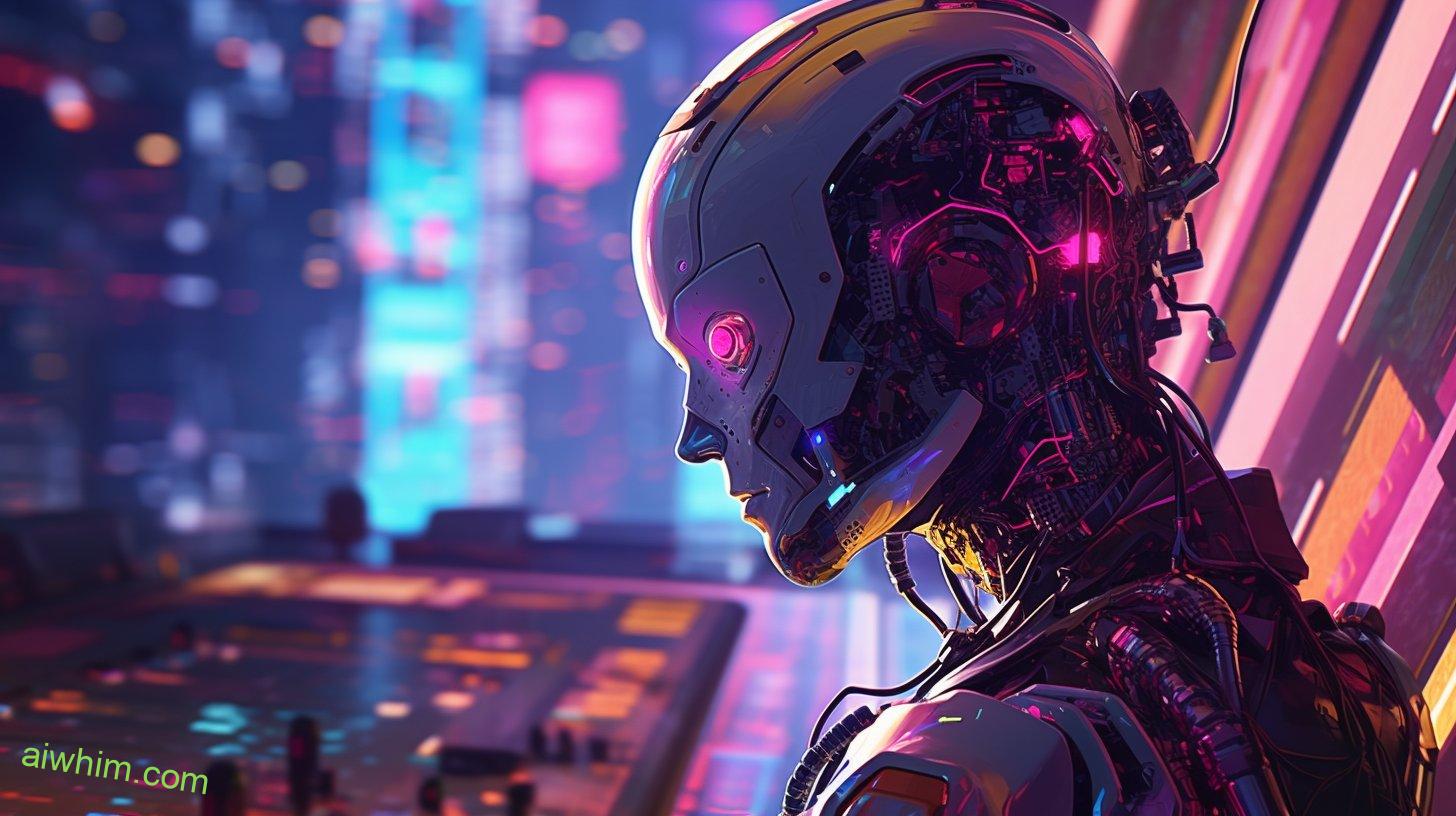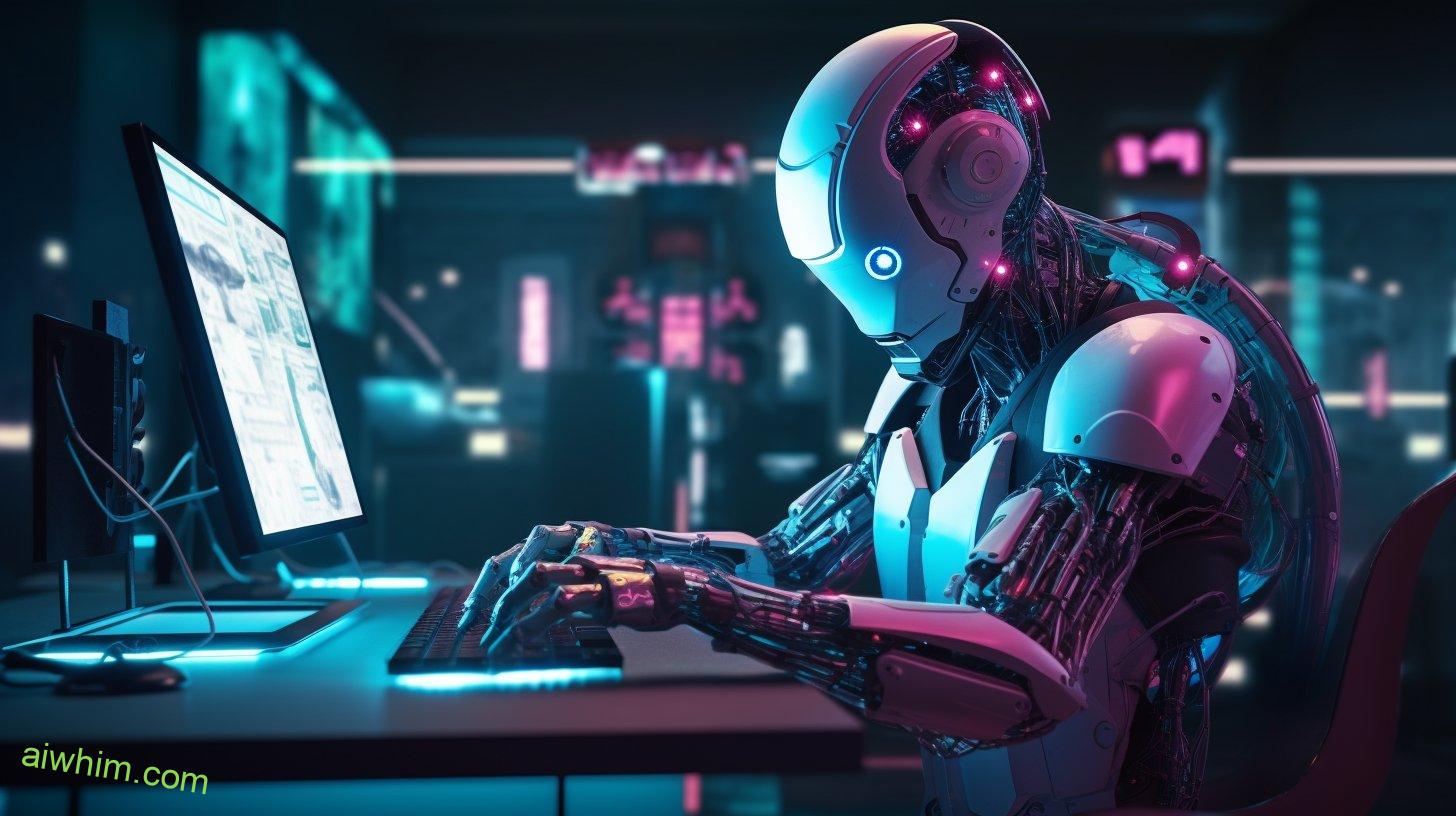Are you ready for the collision between biophysicists and AI? Get ready, because the rise of artificial intelligence in biophysics is unstoppable.
With current applications in research, AI is transforming data analysis and modeling biological systems. Imagine the power of AI-assisted protein folding predictions and algorithms that can predict protein structure and function.
But with this power comes questions about the balance between human expertise and AI. Get ready to explore the implications and find your place in this collision course.
Key Takeaways
- AI plays a crucial role in analyzing biophysical imaging data and accurately identifying structures and patterns.
- The integration of AI in biophysics research leads to improved accuracy and efficiency in simulations and predictions of protein behavior and biological processes.
- Automation and personalized medicine are facilitated by AI, which automates tasks and analyzes genetic data to predict disease susceptibility and recommend personalized treatment plans.
- The ethical considerations surrounding AI integration in biophysics research include the need for high-quality data, interpretability of AI models, and collaboration between biophysicists and AI experts for responsible and ethical use of algorithms and data.
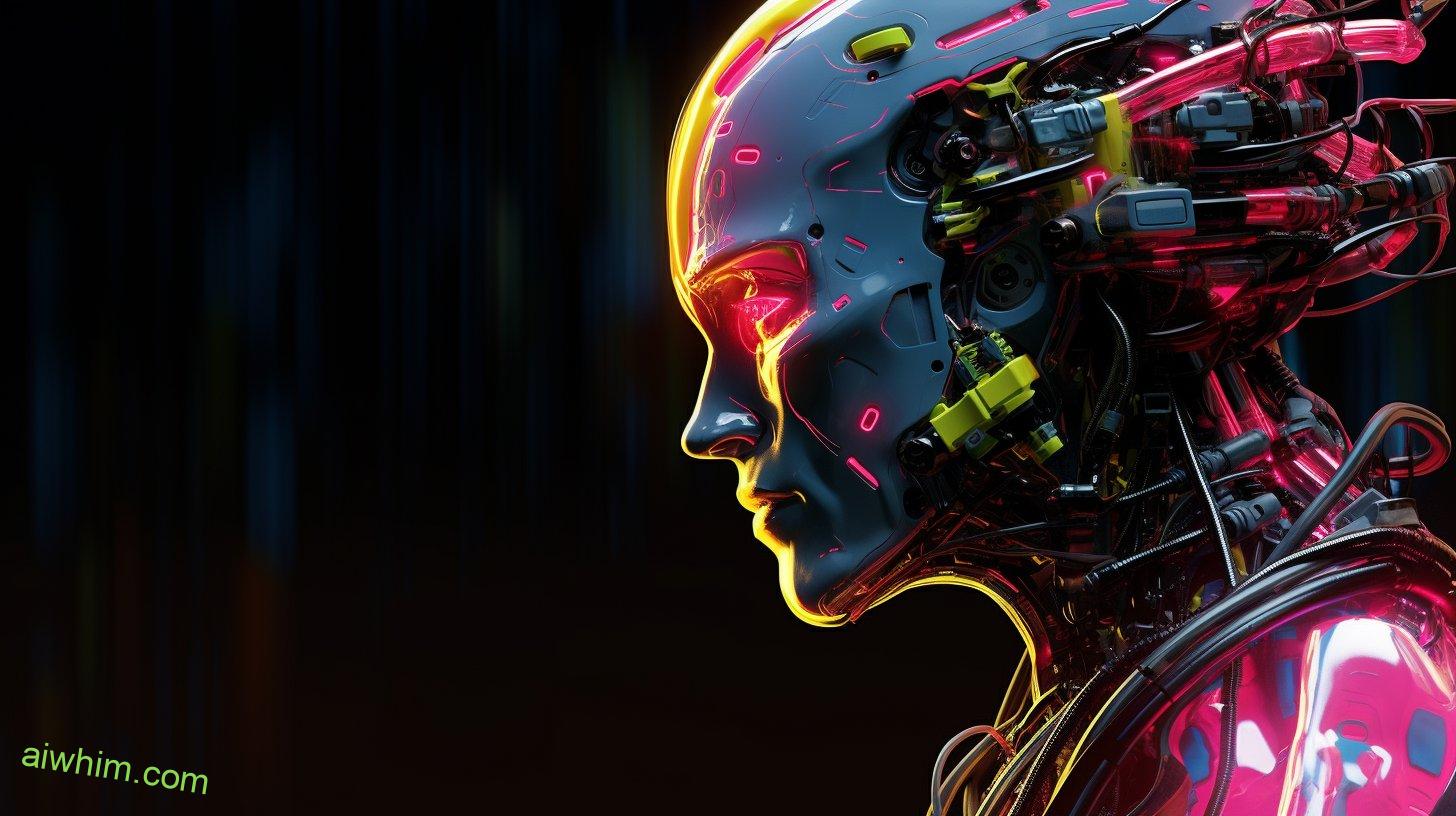
The Rise of Artificial Intelligence in Biophysics
You should definitely keep up with the rise of Artificial Intelligence in Biophysics. The impact of AI on biophysical imaging is undeniable. With AI, biophysicists can now analyze vast amounts of data and extract valuable insights that were previously impossible to obtain. AI algorithms can analyze images from various biophysical imaging techniques, such as electron microscopy or fluorescence imaging, and accurately identify structures and patterns that are crucial for understanding biological processes. This not only saves time but also enhances the accuracy and efficiency of research in the field.
Moreover, AI-driven advancements in biophysical simulations have revolutionized the way scientists model and predict complex biological systems. By utilizing machine learning algorithms, biophysicists can simulate and predict the behavior of proteins, DNA, and other biomolecules with unprecedented accuracy. This allows for a deeper understanding of the underlying mechanisms governing biological processes, leading to breakthroughs in drug discovery, disease treatment, and genetic engineering.
But the impact of AI in biophysics goes beyond just data analysis and simulations. AI has the potential to automate repetitive and time-consuming tasks, allowing researchers to focus on more creative and innovative aspects of their work. It can also assist in the development of personalized medicine, where AI algorithms can analyze an individual’s genetic data to predict disease susceptibility and recommend personalized treatment plans.

Current Applications of AI in Biophysics Research
There are numerous exciting current applications of AI in biophysics research, such as using machine learning algorithms to analyze complex protein structures and predict their functions. This cutting-edge technology has the potential to revolutionize the field, offering new insights and accelerating scientific discoveries.
However, along with these remarkable advancements come current challenges that biophysicists must navigate. One of the current challenges is the need for high-quality data. AI algorithms rely on large datasets to learn and make accurate predictions. Biophysicists face the task of collecting and curating large amounts of data, ensuring its accuracy and relevance to the research question at hand. This requires careful planning and collaboration with other researchers.
Another challenge is the interpretability of AI models. While AI can provide accurate predictions, understanding how these models arrive at their conclusions is often difficult. Biophysicists must find ways to make AI models more interpretable, enabling them to extract meaningful insights and validate the predictions made by the algorithms.
Despite these challenges, the future possibilities of AI in biophysics research are incredibly promising. AI can help uncover complex relationships within biological systems, leading to a deeper understanding of diseases and potential treatments. By combining AI with experimental techniques, scientists can accelerate drug discovery, design more effective therapies, and personalize medicine.

Advantages and Limitations of AI in Biophysical Studies
AI in biophysical studies offers numerous advantages, such as accelerating data analysis and providing insights into complex biological processes, but it also has limitations, including the need for high-quality data and the interpretability of AI models. While AI has revolutionized the field of biophysics in many ways, it’s important to understand its limitations and potential risks.
- Limitations of AI in biophysical studies:
One major limitation is the requirement for high-quality data. AI models heavily rely on data to learn and make accurate predictions. If the data is incomplete or of poor quality, it can lead to biased or inaccurate results. Another limitation is the interpretability of AI models. While these models can provide valuable insights, they often lack transparency, making it difficult for researchers to understand how the AI arrived at its conclusions. - Potential risks of AI integration in biophysics research:
One potential risk is overreliance on AI. While AI can greatly enhance research, it shouldn’t replace human expertise and intuition. Researchers should always critically evaluate the output of AI models and use them as tools rather than relying solely on their predictions. Another risk is the ethical implications of AI. As AI becomes more integrated into biophysics research, it’s important to consider issues such as data privacy, bias, and the potential for misuse. - Balancing the use of AI in biophysics:
To overcome the limitations and potential risks of AI, it’s crucial to strike a balance between human expertise and AI capabilities. Researchers should ensure that the data used for AI models is of high quality and representative of the population being studied. Additionally, efforts should be made to make AI models more interpretable and transparent, allowing researchers to understand and validate their findings. - Continued research and development:
To address the limitations and potential risks, continuous research and development in AI is necessary. This includes improving data quality, developing more interpretable AI models, and implementing ethical guidelines for AI integration in biophysics research. By doing so, biophysicists can harness the full potential of AI while minimizing its limitations and risks.

How AI Is Transforming Data Analysis in Biophysics
AI is revolutionizing data analysis in biophysics, streamlining processes and providing valuable insights into complex biological systems. Thanks to AI driven advancements, biophysicists now have powerful tools at their disposal to analyze and interpret vast amounts of data with unprecedented speed and accuracy. The integration of AI into biophysical studies has ushered in a new era of research, enabling scientists to uncover hidden patterns and relationships that were once impossible to detect.
With AI based data interpretation, biophysicists are able to make sense of complex datasets that would otherwise be overwhelming to analyze manually. AI algorithms can quickly identify key variables and correlations, allowing researchers to focus on the most relevant aspects of their studies. This not only saves time and resources, but also enhances the quality and reliability of the research outcomes.
Moreover, AI has the potential to revolutionize experimental design in biophysics. By analyzing existing data and simulating different scenarios, AI algorithms can suggest optimal experimental conditions and parameters to maximize the chances of success. This not only accelerates the research process, but also increases the chances of obtaining meaningful results.
However, it’s important to remember that AI is a tool, and its effectiveness ultimately depends on the skill and expertise of the biophysicist using it. While AI can provide valuable insights and streamline processes, it’s still up to the researcher to interpret and validate the results. Additionally, ethical considerations and data privacy should always be taken into account when using AI in biophysical studies.

The Role of AI in Modeling Biological Systems
As a biophysicist, you can leverage the power of AI to model biological systems and gain valuable insights into their complex behavior. AI has revolutionized various fields, and its potential in drug discovery and disease modeling is particularly exciting. Here are four ways AI is shaping the future of biophysics:
- Accelerating Drug Discovery: Traditional drug discovery is a time-consuming and expensive process. AI algorithms can analyze vast amounts of data, including genetic information, protein structures, and chemical properties, to predict drug efficacy and identify potential candidates. This enables researchers to prioritize experiments and streamline the drug development pipeline, ultimately leading to faster and more effective treatments.
- Improving Disease Modeling: AI can aid in the creation of accurate disease models by integrating diverse data sources and simulating complex biological processes. By incorporating genetic, environmental, and lifestyle factors, AI algorithms can generate predictive models that help identify disease mechanisms, understand patient heterogeneity, and develop personalized treatment strategies.
- Enhancing Target Identification: AI algorithms can sift through large datasets to identify novel drug targets. By analyzing genetic and molecular data, AI can uncover hidden relationships and identify potential targets that were previously overlooked. This approach broadens the scope of possible therapeutic interventions and opens new avenues for drug development.
- Optimizing Clinical Trials: AI can optimize the design and analysis of clinical trials, leading to more efficient and informative studies. AI algorithms can identify patient subgroups that are more likely to respond to a particular treatment, enabling researchers to design targeted trials and increase the chances of success. Additionally, AI can analyze real-time patient data during trials to monitor safety and efficacy, allowing for adaptive trial designs and faster decision-making.
In conclusion, AI has the potential to revolutionize biophysics by enabling more efficient drug discovery, accurate disease modeling, improved target identification, and optimized clinical trials. As a biophysicist, embracing AI can empower you to unlock new insights and make significant contributions to the field.

Ethical Considerations for AI Integration in Biophysics
You should carefully evaluate the ethical implications of integrating artificial intelligence into biophysics, considering the potential risks and benefits it may bring. As biophysicists, you are at the forefront of scientific discovery, pushing boundaries and exploring new frontiers. The integration of artificial intelligence into biophysics has the potential to revolutionize the field, but it also raises important ethical considerations that must not be overlooked.
One of the key ethical considerations is data privacy. When using AI in biophysics, large amounts of data are collected and analyzed. This data often includes personal information, such as medical records or genetic data. It is crucial to ensure that this data is handled responsibly and securely. Privacy breaches can have severe consequences, including discrimination, stigmatization, and the misuse of personal information. As biophysicists, you have a responsibility to protect the privacy of individuals whose data you are working with.
To help you understand the potential risks and benefits of integrating AI into biophysics, let’s examine a table that highlights the ethical implications:
| Ethical Implications | Potential Risks | Potential Benefits |
|---|---|---|
| Data Privacy | Privacy breaches, misuse of personal data | Improved diagnostics, personalized medicine |
| Bias in AI | Discrimination, unfair treatment | Enhanced efficiency, more accurate results |
| Autonomy and Accountability | Lack of transparency, loss of control | Streamlined processes, increased productivity |
This table serves as a reminder of the ethical considerations that must be carefully evaluated. It is essential to strike a balance between the potential risks and benefits, ensuring that the integration of AI into biophysics is done in an ethical and responsible manner. By doing so, you can harness the power of AI while safeguarding the freedom and well-being of individuals.
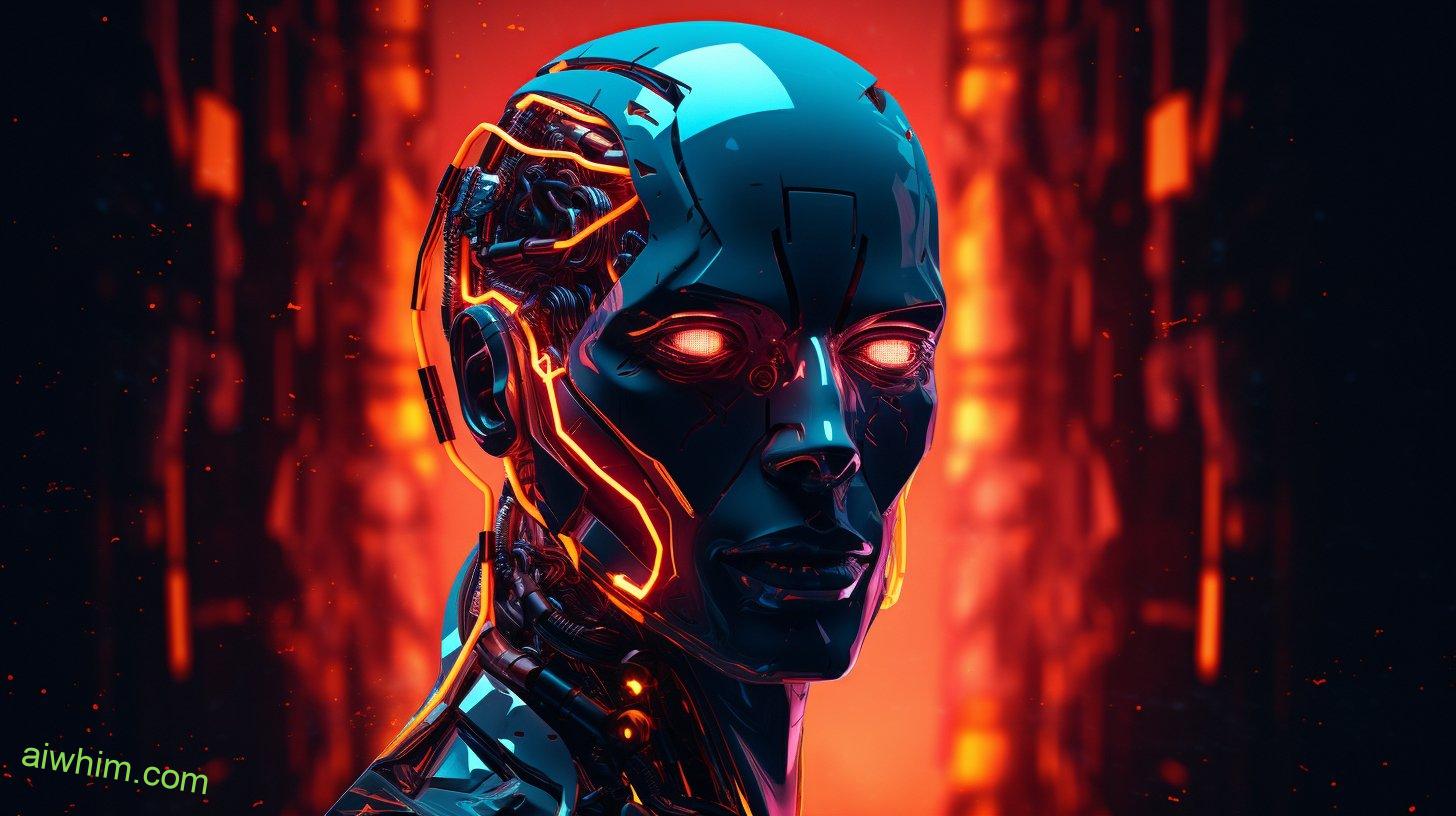
Challenges in Integrating AI Into Biophysics Research
To effectively integrate AI into biophysics research, it’s important to address the challenges that arise in this process. The implementation of AI in biophysics research has the potential to revolutionize the field, but it also brings forth a unique set of challenges. Here are four key challenges that researchers face when integrating AI into biophysics research:
- Data availability and quality: AI relies heavily on data, and in biophysics research, obtaining high-quality and relevant data can be a challenge. Researchers must ensure that the data they use is accurate, reliable, and representative of the biological processes they’re studying.
- Interpretability and explainability: AI models can be complex, making it difficult to interpret and explain the reasoning behind their predictions. In biophysics research, where understanding the underlying mechanisms is crucial, it’s important to develop AI models that can provide transparent explanations for their predictions.
- Ethical considerations: The use of AI in biophysics research raises ethical concerns, such as privacy, consent, and potential bias in decision-making. Researchers must navigate these ethical challenges and develop guidelines to ensure that AI is used responsibly and in accordance with ethical standards.
- Integration with existing methodologies: Introducing AI into biophysics research requires integrating it with existing methodologies and workflows. This can be a complex process that requires collaboration between biophysicists and AI experts to ensure a seamless integration and minimize disruptions to the research process.
Addressing these challenges will be crucial in harnessing the full potential of AI in biophysics research. By overcoming these obstacles, researchers can leverage AI to advance our understanding of complex biological systems and drive innovation in the field.

The Future of Collaboration Between Biophysicists and AI
Your collaboration with AI will play a crucial role in shaping the future of biophysics research. As a biophysicist, you understand the importance of pushing the boundaries and exploring new frontiers. The integration of AI into the field of biophysics presents exciting opportunities and future challenges that require interdisciplinary collaboration.
Biophysics research encompasses the study of biological systems using principles and techniques from physics, biology, and other related disciplines. It delves into the fundamental principles governing life processes at the molecular, cellular, and organismal levels. With the advent of AI, the potential for breakthroughs in biophysics is immense.
AI has the ability to process and analyze vast amounts of data, uncovering patterns and insights that may have otherwise gone unnoticed. It can assist in modeling complex biological systems, predicting protein structures, and simulating biological processes. By collaborating with AI, you can leverage its computational power and enhance your understanding of the intricate mechanisms underlying life.
However, this collaboration also brings forth future challenges. As AI becomes more integrated into biophysics research, it’s essential to ensure the ethical use of AI algorithms and data. Transparency, privacy, and accountability should be at the forefront of these collaborations. Additionally, interdisciplinary collaboration becomes crucial as biophysicists work alongside computer scientists, mathematicians, and other experts to harness the full potential of AI.
The future of biophysics research lies in your hands, as you actively engage in collaborating with AI. The opportunities are boundless, and the challenges are surmountable through interdisciplinary collaboration. By embracing this partnership and striving for ethical and responsible AI integration, you have the power to shape the future of biophysics and advance our understanding of life itself.
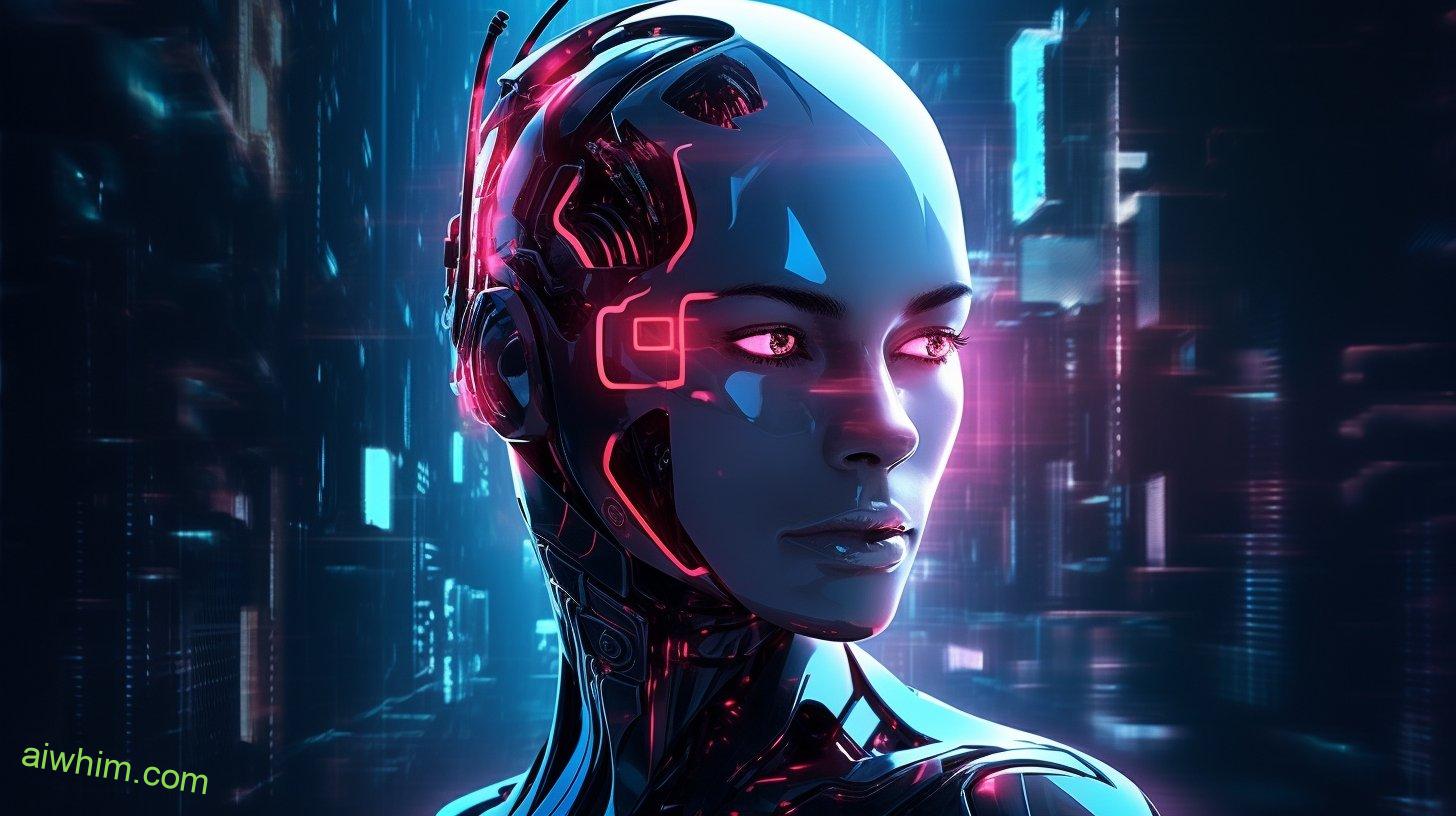
AI-Driven Innovations in Drug Discovery and Development
With AI-driven innovations, researchers can expedite the process of drug discovery and development. The integration of AI in personalized medicine has opened up new possibilities for improving patient care and treatment outcomes. Here are four key aspects to consider when discussing the impact of AI in drug development:
- Enhanced efficiency: AI algorithms can analyze vast amounts of data and identify patterns that humans may miss. This accelerates the drug discovery process by enabling researchers to identify potential drug candidates more quickly. AI can also assist in predicting drug efficacy and side effects, allowing for more informed decision-making.
- Targeted treatments: AI enables the development of personalized medicine by analyzing an individual’s genetic information and medical history. This allows for tailored treatments that address the specific needs of each patient. By leveraging AI-driven advancements, researchers can identify novel targets for drug development and design therapies that are more precise and effective.
- Improved safety: AI can contribute to enhancing drug safety by predicting potential risks and adverse reactions. By analyzing large datasets of patient information, AI algorithms can identify potential drug interactions and side effects. This information can then be used to design safer medications and optimize treatment plans, minimizing the risks associated with drug development.
- Ethical considerations: While AI offers significant benefits, it’s important to acknowledge the potential risks of relying solely on AI in drug development. Human oversight and ethical considerations are crucial to ensure the responsible use of AI technologies. It’s essential to strike a balance between the capabilities of AI and human expertise to maximize the potential benefits while minimizing any unintended consequences.

Exploring AI-Assisted Protein Folding Predictions
You can enhance your understanding of protein folding predictions by exploring the benefits of AI assistance. As biophysicists, you are constantly seeking ways to improve your understanding of the complex world of protein folding. The integration of AI in this field has opened up new possibilities and has the potential to revolutionize the way you approach your research. By utilizing AI algorithms and machine learning techniques, you can now obtain more accurate predictions and insights into protein folding processes.
Let’s take a closer look at how AI assistance can benefit protein folding predictions:
| Benefits of AI Assistance in Protein Folding Predictions |
|---|
| Improved Accuracy |
| Increased Efficiency |
| Enhanced Data Analysis |
Improved Accuracy: AI algorithms have the ability to analyze vast amounts of data and identify patterns that may not be easily detectable by humans. This allows for more accurate predictions and a deeper understanding of the folding dynamics.
Increased Efficiency: AI assistance can significantly speed up the prediction process. With AI algorithms, you can analyze large datasets in a fraction of the time it would take using traditional methods. This enables you to explore a wider range of protein folding scenarios and accelerate your research progress.
Enhanced Data Analysis: AI algorithms can handle complex datasets with ease, enabling you to extract meaningful insights from your data. By combining AI assistance with your biophysical expertise, you can uncover hidden correlations and gain a deeper understanding of the underlying mechanisms of protein folding.
While the integration of AI in biophysics brings numerous benefits, it also raises ethical considerations. As you explore AI-assisted protein folding predictions, it is important to consider the ethical implications of relying heavily on AI algorithms. These considerations include data privacy, bias in algorithmic decision-making, and the potential for AI to replace human expertise.

AI Algorithms for Predicting Protein Structure and Function
By utilizing AI algorithms, you can gain valuable insights into the structure and function of proteins. AI-driven drug discovery and AI-assisted protein folding are revolutionizing the field of biophysics, opening up new possibilities and challenging traditional research methods.
Here are four ways in which AI is transforming the study of proteins:
- Accelerating drug discovery: AI algorithms can analyze vast amounts of data and identify potential drug targets with high precision. This speeds up the drug discovery process, allowing researchers to focus their efforts on the most promising candidates. With AI, you have the power to revolutionize the development of life-saving medications.
- Enhancing protein structure prediction: Determining the three-dimensional structure of proteins is crucial for understanding their function. AI algorithms can predict protein structures with remarkable accuracy, providing valuable insights into their behavior and interactions. With AI, you can unlock the secrets of protein folding and unravel the mysteries of life.
- Improving protein function prediction: AI algorithms can predict the functions of proteins based on their sequences and structures. This knowledge is essential for understanding biological processes and designing targeted therapies. With AI, you can uncover the hidden potential of proteins and harness their power for various applications.
- Enabling personalized medicine: AI algorithms can analyze individual genetic data and predict how specific proteins will behave in different individuals. This personalized approach to medicine allows for more tailored treatments and better patient outcomes. With AI, you can empower individuals to take control of their health and well-being.

Implications of AI on Biophysical Experiments and Techniques
As a biophysicist, it’s crucial to consider the implications of AI on biophysical experiments and techniques. AI has the potential to revolutionize the field by streamlining data analysis and optimizing experimental protocols. One of the most significant impacts of AI on biophysical research techniques is its ability to accelerate scientific discovery.
AI can process vast amounts of data quickly and efficiently, enabling researchers to analyze complex biological systems in a fraction of the time it would take using traditional methods. This not only saves time but also allows scientists to explore a wider range of research questions and hypotheses. By automating data analysis, AI frees up valuable time for biophysicists to focus on designing and conducting experiments, ultimately accelerating the pace of scientific discovery.
Moreover, AI can assist in optimizing experimental protocols. By analyzing large datasets and identifying patterns and trends, AI algorithms can suggest modifications to experimental procedures that lead to more accurate and reliable results. This not only improves the quality of data but also increases the efficiency of experiments, saving both time and resources.
However, it’s important to acknowledge that AI isn’t a replacement for human intelligence and expertise. Biophysicists still play a vital role in interpreting the results, validating the findings, and making informed decisions based on their knowledge and experience.

Balancing Human Expertise and AI in Biophysical Research
Sometimes, incorporating AI into biophysical research can be challenging as it requires finding the right balance between human expertise and AI capabilities. However, when done effectively, the collaboration between humans and AI can greatly optimize research workflows and lead to groundbreaking discoveries.
Here are four key considerations to keep in mind when balancing human AI collaboration in biophysical research:
- Leveraging AI’s Analytical Power: AI has the ability to analyze vast amounts of data quickly, allowing researchers to uncover patterns and insights that may have otherwise been missed. By integrating AI algorithms into research workflows, biophysicists can benefit from its powerful analytical capabilities, enabling them to make better-informed decisions and accelerate their research progress.
- Human Expertise and Intuition: While AI can process data at an astonishing speed, it lacks the intuition and creativity of human researchers. It’s crucial to recognize and leverage human expertise in biophysical research. By combining human intuition with AI’s analytical power, scientists can make more accurate interpretations and generate novel hypotheses, leading to breakthrough discoveries.
- Ethical Considerations: The integration of AI in biophysical research raises important ethical considerations. It’s essential to establish guidelines and regulations to ensure that AI is used responsibly and in line with ethical standards. Biophysicists must actively participate in the development of these guidelines to ensure the responsible use of AI in their research.
- Continuous Learning and Adaptability: AI technologies are constantly evolving, and biophysicists must stay updated with the latest advancements. By fostering a culture of continuous learning and adaptability, researchers can effectively integrate AI into their workflows and leverage its full potential. This includes keeping up with new AI algorithms, tools, and techniques, as well as understanding their limitations.
Finding the right balance between human expertise and AI capabilities is key to optimizing research workflows in biophysical research. By harnessing the power of AI while valuing human intuition and expertise, biophysicists can push the boundaries of scientific knowledge and make significant contributions to the field. Remember, the collaboration between humans and AI is a powerful tool that can drive innovation and lead to groundbreaking discoveries.

Frequently Asked Questions
How Are Biophysicists Currently Using AI in Their Research?
You’re probably wondering how biophysicists are currently using AI in their research. Well, they’re utilizing AI to enhance biophysical studies and explore various applications, opening up new possibilities in the field.
What Are the Advantages and Limitations of Using AI in Biophysical Studies?
Using AI in biophysical studies has advantages like increased efficiency and accuracy, but there are limitations too, such as the need for large datasets and potential bias. However, the choice to use AI ultimately depends on your research goals and resources.
How Is AI Transforming Data Analysis in the Field of Biophysics?
AI is revolutionizing data analysis in biophysics. Its role in transforming how we analyze and interpret complex biological data is undeniable. Biophysicists like you are witnessing firsthand the impact AI has in advancing research and pushing boundaries.
What Ethical Considerations Should Be Taken Into Account When Integrating AI Into Biophysics Research?
When integrating AI into biophysics research, it is vital to consider ethical considerations and the impact on society. Freedom demands that you reflect on the potential consequences and ensure responsible use of this technology.
What Are the Challenges in Integrating AI Into Biophysics Research?
Integrating AI into biophysics research presents challenges such as data integration, algorithm development, and ethical considerations. However, the future prospects of this integration hold promise for advancements in understanding complex biological systems and accelerating scientific discoveries.
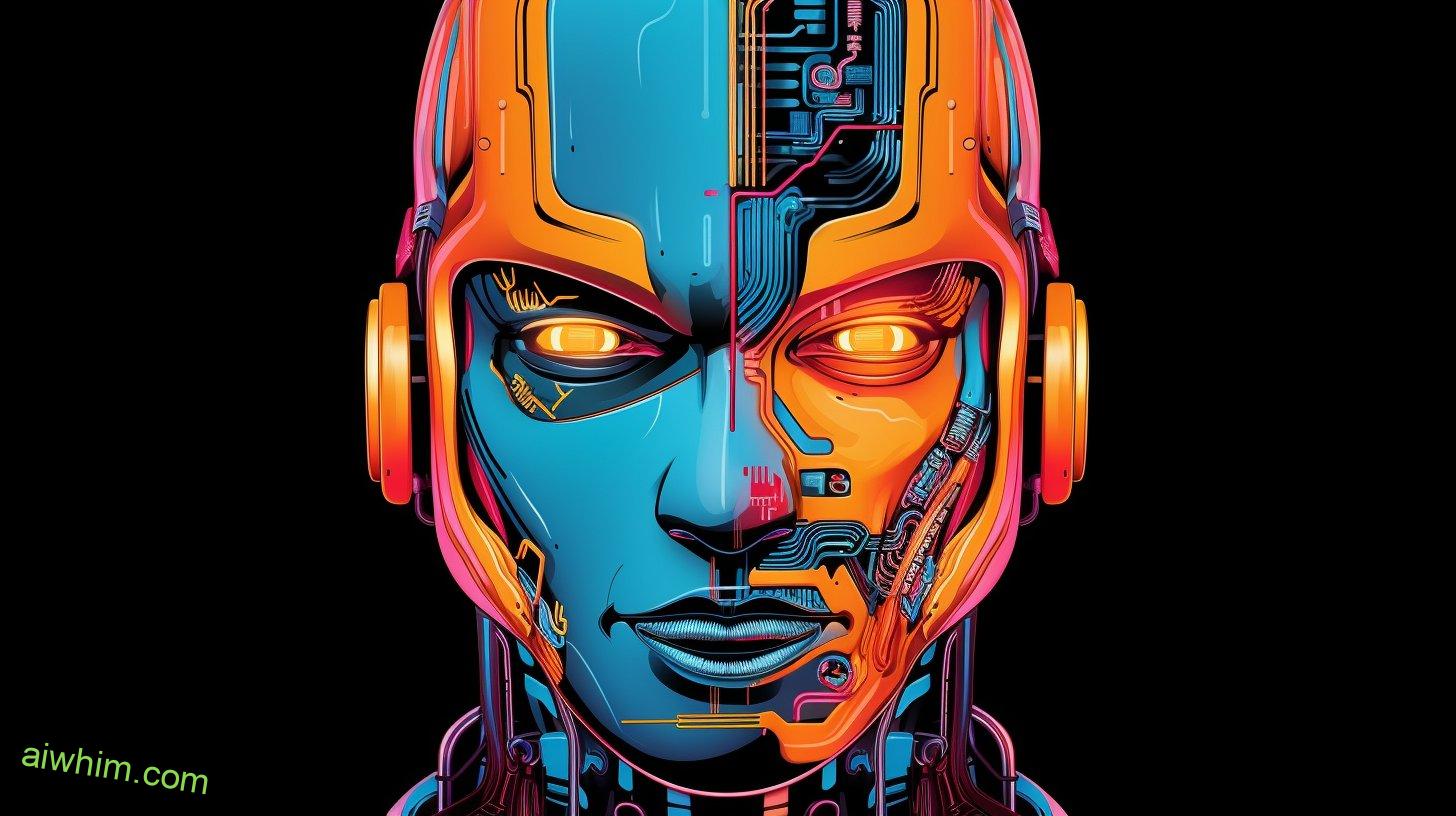
Conclusion
As biophysicists venture further into the realm of artificial intelligence, they find themselves on a collision course with a future filled with endless possibilities. The rise of AI in biophysics research has already shown great potential in data analysis, modeling biological systems, and predicting protein structure and function.
However, it’s crucial to strike a balance between human expertise and AI, ensuring that the unique insights and creativity of scientists aren’t overshadowed by the power of machines.
Together, biophysicists and AI can unlock new frontiers in understanding the complexities of life.



